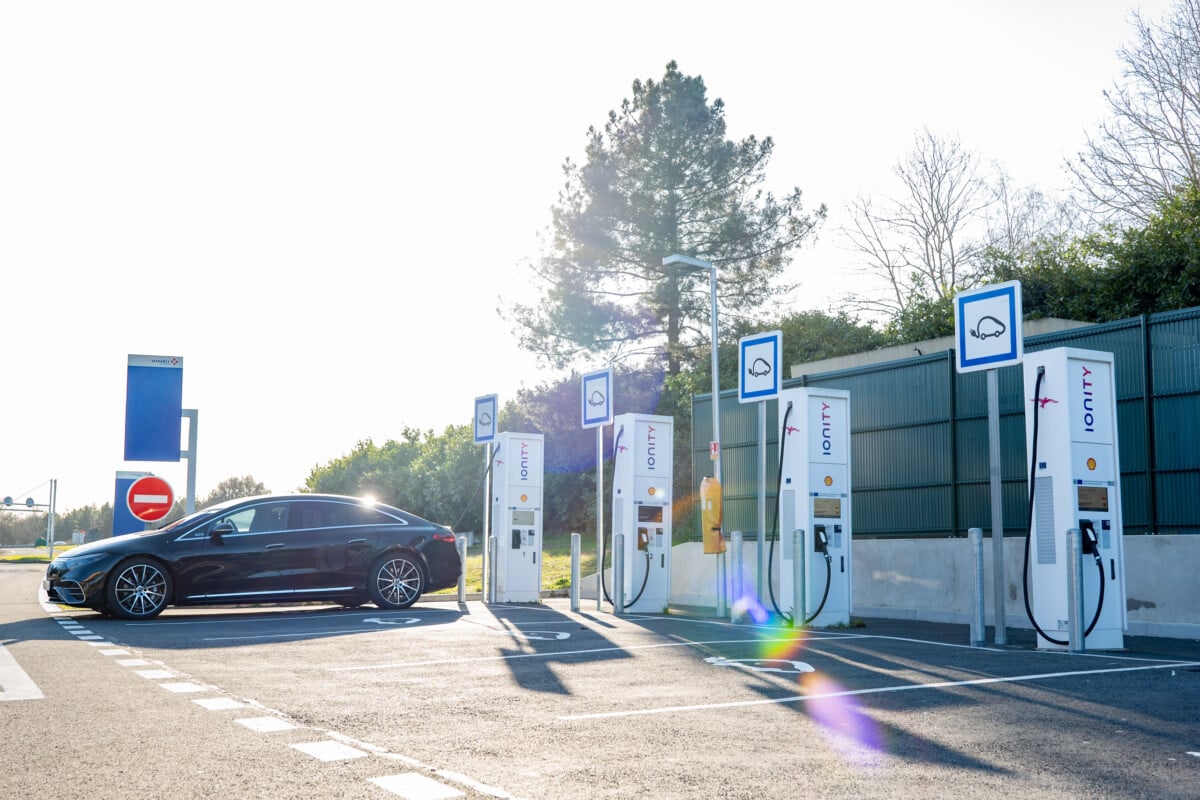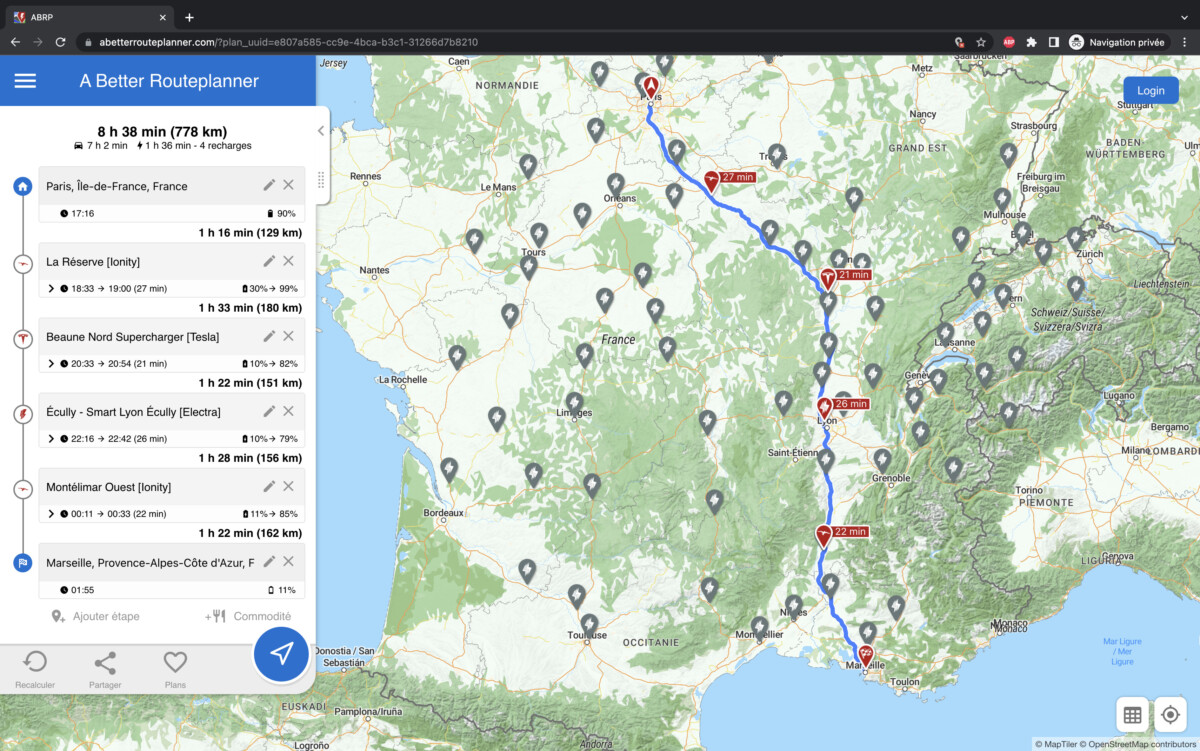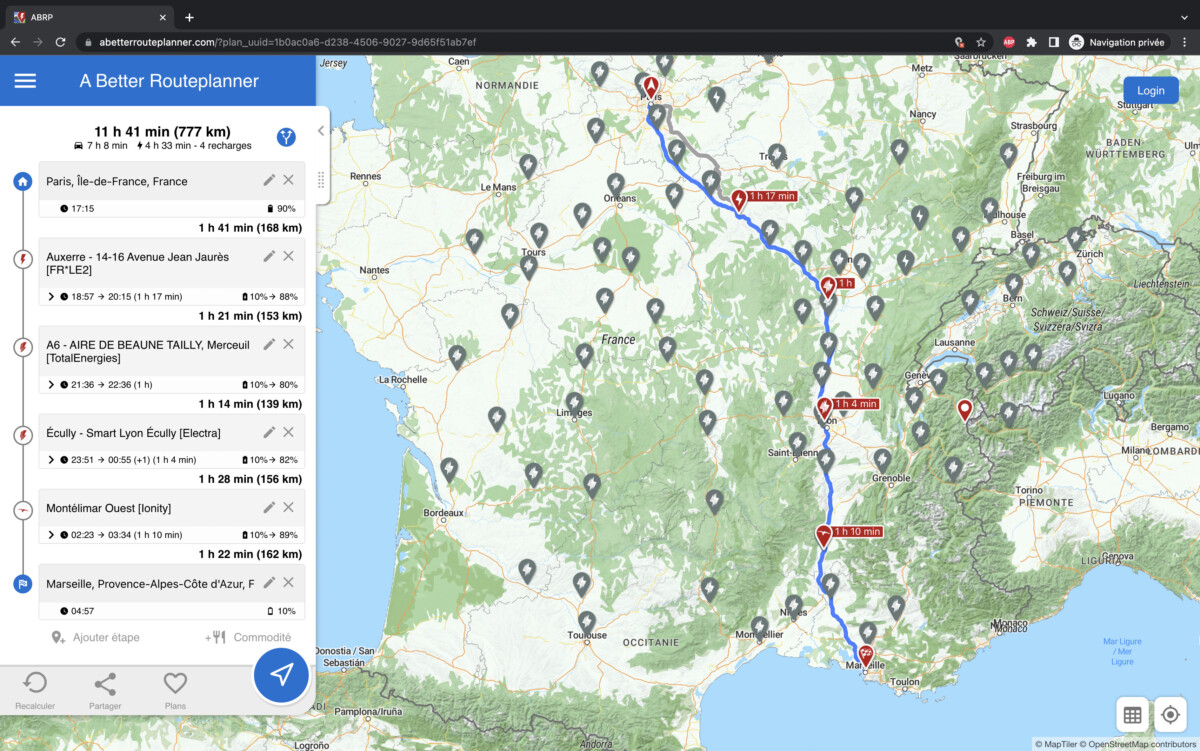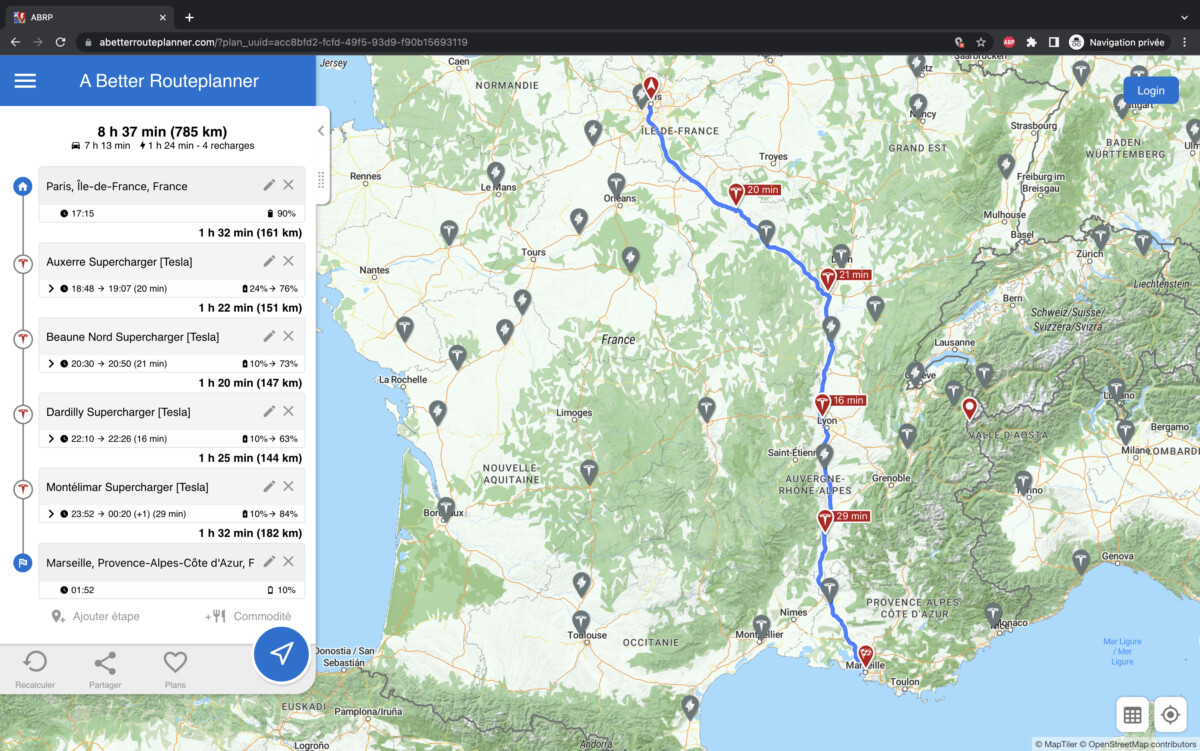What is the advertised autonomy of electric vehicles? We are comparing three cars with a range of 400 km on a long journey of almost 800 km. What is ultimately more important: range, consumption or charging power?
Autonomy is undoubtedly the feature of an electric car that is most talked about. Indeed, announcing a vehicle with sufficient autonomy for long trips to seem possible is essential, and manufacturers have understood this.
We’ve covered the various vehicles claiming the longest range before, but today we’re going to focus on two models that claim around 400 kilometers of range on the WLTP cycle, and see what that means in actual conditions.
On a daily basis, we will see that the announced autonomy is of little importance, provided that you can recharge frequently. Thus, during long journeys, two vehicles with the same range may ultimately have large differences in total travel time. We saw it recently with the ranking of the fastest electric cars on long journeys.
Indeed, in addition to autonomy, other factors appear to be much more decisive when traveling by electric car: charging speed and consumption in particular. Without further ado, let’s see what really hides behind a range indicated by the car manufacturers.
WLTP vs. Reality
We have already gone back in detail to the way in which the WLTP certification of an electric vehicle was carried out, and as you can imagine, this almost never represents real conditions. The total distance traveled at the time of the homologation cycle is 23.2 km, at an average speed of 46.5 km/h, far from our major motorway journeys in France.
As travel speed is a factor that has a huge influence on the consumption of an electric car, one thing is certain: achieving the advertised WLTP autonomy is impossible on the highway at 130 km/h. To get a rough idea of the real range at highway speeds, it is good to keep around 60% of the WLTP range only. A car announced with 500 kilometers of WLTP autonomy is thus approximately capable of traveling 300 kilometers of motorway at 130 km/h.

In everyday life, electric vehicles intended to be the first household vehicle, however, have a strong interest in having substantial autonomy in the WLTP cycle, even if this does not represent reality, if only for psychological reasons when buying. Indeed, it is unlikely that a household will consider a vehicle displaying 250 kilometers of WLTP autonomy compared to another indicating 400 kilometers of autonomy.
However, on a daily basis, with an average of approximately 30 kilometers traveled per day by the French, a vehicle with a short range may be more than enough. The condition is of course to be able to recharge it frequently, at home or elsewhere.
More and more vehicles are now being offered with nearly 400 kilometers of WLTP autonomy displayed, from city cars to SUVs and electric sedans, but in practice, are all these cars the same for long journeys? We will see that one of the most important factors is to be sought elsewhere than at the level of autonomy displayed.
Charging speed: the sinews of war?
As you will have understood, comparing the long journeys of two vehicles offering the same range can lead to very different results depending on their charging power. We have a series of files specifically on this subject, aiming to rank the fastest charging vehicles, to try to identify those that stand out. But an essential component remains to be considered when you want to reach your destination as quickly as possible: consumption.
Indeed, as we show in our series relating to large reference journeys with different electric cars, those which arrive the fastest possible are not always those which charge the fastest. Two vehicles with the same WLTP range, the same maximum charging power, but different consumption do not have the same total travel times on a similar route.
Unfortunately, there is no perfect measurement allowing you to identify at a glance which electric vehicle allows you to travel more serenely than another over long distances, but you have to compare all the figures available to know what is expect. The most difficult thing is to know the motorway fuel consumption of a given model. Consumption is indeed always announced on a combined cycle, corresponding more to peri-urban use.
It is therefore best to use applications such as Chargemap or ABRP and simulate motorway journeys to find out the consumption, the charging speed and therefore the duration of a long journey by electric car. This is what we will do below.
In order to highlight the differences between several electric cars with comparable WLTP range, we will take the example of the current Renault Zoe, the 2020 Tesla Model 3 Standard Range Plus and the entry-level Hyundai Ioniq 5 .
The French has a WLTP range of 395 kilometers, and fast charging (optional at 50 kW) is present on our route simulations. On the other hand, the entry-level Hyundai Ioniq 5 offers a range slightly below, of 384 kilometers, but is one of the champions of fast charging (221 kW of power on an 800-volt architecture). The Tesla Model 3 Standard Autonomy Plus, for its part, had a range of 409 kilometers at the time and a maximum charging power of 170 kW.
Through this practical example, we will see that in practice, two vehicles with comparable autonomy can offer a drastically different travel experience.
Demonstration by example
With the help of the excellent A Better Route Planner, which needs no introduction, we decided to consider our reference winter route: 850 kilometers between Caen and Chamonix-Mont-Blanc. The default parameters for both vehicles are filled in, with a start at 90% and an arrival at 10% in the case of the Renault Zoe as well as the Hyundai Ioniq 5.
Hyundai Ioniq 5: a quick ride
It takes 4 recharges to complete the journey in the entry-level Hyundai Ioniq 5, and its battery with a capacity of 58 kWh, the longest charge of which lasts only 27 minutes. In total, the travel time is 8 hours and 38 minutes, for 1 hour and 36 minutes of charge. By navigating between the different charging networks available (Totalnergies, Tesla Superchargers or even Ionity), this journey is made a priori without incident.

Renault Zoé: very slow charging
With the Renault Zoe offering superior range on paper, despite its smaller 52kWh battery, it takes the same number of stops to get to its destination. But although it offers a “fast” charge, the French is far from recharging as quickly as the Hyundai Ioniq 5. Indeed, it takes no less than 4 hours and 33 minutes of charging in total on the tripmore than three hours longer than in Ioniq 5!

The total travel time is then increased to 11 hours and 41 minutes, which makes this trip a real journey. In addition, we note that the shortest charge is 1 hour minutes in Renault Zoe against 1 hour and 7 minutes for the longest.
Tesla Model 3 Standard Plus: record broken
In Tesla Model 3 Standard Autonomy Plus, the same route is shot in 8 hours and 37 minutes, including 1h and 24 minutes of charge only. Four charges are required for the 2020 Tesla with a 50 kWh battery. The longest charge lasts 20 minutes and the fastest 16 minutes. The Hyundai Ioniq 5 with a nearly 20% larger battery and higher charging power does not do better, but the estimate is substantially similar so that we are within the margin of error with therefore a tie between both cars.

The situation between the Tesla and the Hyundai is very easily explained by the lower fuel consumption of the American car on the highway compared to the Korean, which managed to match the game thanks to its higher charging speed. Thus, the Model 3 is given for a WLTP consumption of 14.9 kWh / 100 km against 16.7 kWh / 100 km for the Ioniq 5. The Renault Zoé has a consumption of 17.4 kWh / 100 km on mixed cycle.
This proves that it is better to look at the WLTP consumption figures rather than the WLTP autonomy. Obviously, we have consciously chosen these vehicles to arrive at a result that varies greatly. The goal was indeed to show that the autonomy displayed was not necessarily significant, especially when you want to travel long distances.
| Model | WLTP autonomy | Maximum load power | Total travel time |
|---|---|---|---|
| Renault Zoe (2019) | 395km | 50kW | 11:41 a.m. |
| Hyundai Ioniq 5 (2021) | 384km | 221kW | 8 hrs 38 mins |
| Tesla Model 3 Standard Range Plus (2020) | 409km | 170kW | 8:37 a.m. |
Conclusion
Thus, if the WLTP standard is there to compare the autonomy of vehicles and try to make a classification, it must be kept in mind thatit does not necessarily reflect reality. Apart from the fact that the test protocol is carried out at low speed, two vehicles with a similar range can behave very differently on long journeys.
As far as possible, we try during our tests to share the consumption that we have noted, so as to help you measure the real autonomy of the vehicles. Of course, our long-haul simulations are also a good resource for seeing where a vehicle stands when exceeding its advertised range compared to others.
In any case, try to keep in mind that the advertised autonomy is only relevant in a few real cases, but that it gives a small idea of the vehicle’s capabilities all the same. In practice, long journeys such as the one described above make it possible to realize the benefits of really fast charging and contained consumption rather than greater autonomy.
To sum up, rather than the WLTP autonomy, when buying an electric car, it is better to look at the side of WLTP consumption and charging power. Be careful on this last point since the manufacturers communicate the maximum power (rarely reached in practice) and not the average power, which differs greatly according to the vehicles and their charging curve as explained in a previous file. The best is still to refer to the time required to go from 10 to 80% autonomy.
Finally, to avoid any surprises and acquire a vehicle that does not meet your expectations, do not hesitate to consult our file on the planning of long journeys by electric car, which allows you to see more clearly the factors to be taken into account at the time of purchase.
To follow us, we invite you to download our Android and iOS application. You can read our articles, files, and watch our latest YouTube videos.


